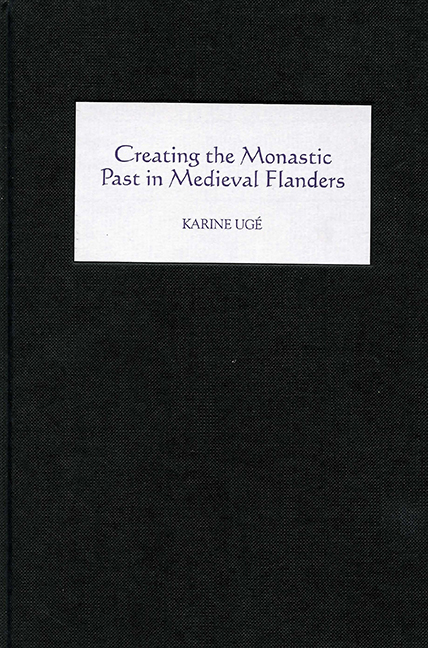Part I - Saint-Bertin
Published online by Cambridge University Press: 12 September 2017
Summary
THE FIRST ABBEY studied here is the abbey of Saint-Bertin. It is an ideal case to begin with because of the abundance and variety of texts produced by the community in the tenth and eleventh centuries in order to reinvent its past. This wealth of documentation will allow us from the outset to deal with many of the main issues related to a monastic community's politics of narrative production: the preservation and alteration of its archives and historical tradition, the different motives behind its historiographic production, the role of forgery, and the subjects of genres and types of texts used in the process. What is more, it happens that Saint-Bertin remained, until it dissolution in the eighteenth century, embroiled in the same conflicts that had triggered the production of these narratives in the early Middle Ages. The persistence of the conflict provides an exceptional opportunity to examine the impact of the way archives were kept, not only for the Middle Ages and the Early Modern period, but on our ability to properly reconstruct the past. The profusion of sources emanating from Saint-Bertin for most of the period covered here allows us both to reconstruct its history in some detail, and to deal at length with the issues of the politics of narrative production.
The first chapter of this section, Chapter 1, recounts the history of the monastery from its foundation by St Omer and StMummolinus in the middle of the seventh century, to the end of the eleventh century. Although Saint-Bertin's importance as a religious, economical and cultural centre is unanimously acknowledged, no scholar before has undertaken a comprehensive account of its history. This chapter seeks to correct this situation by covering the major issues of the life of Saint-Bertin's community: its foundation and expansion in its first century and its role in the politics of successive dynasties – Merovingian, Carolingian and Flemish – which controlled and patronized it. The task of reconstructing Saint-Bertin's past is facilitated by the huge number of narrative and diplomatic sources produced by the monks throughout the period.
- Type
- Chapter
- Information
- Creating the Monastic Past in Medieval Flanders , pp. 17 - 18Publisher: Boydell & BrewerPrint publication year: 2005

